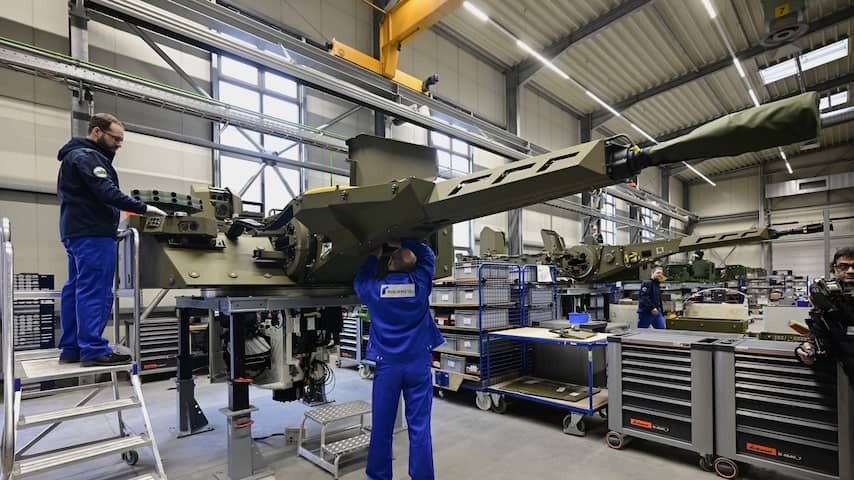
NATO member states will invest billions of euros more in defense in the coming years. These agreements were made last week during the NATO summit in The Hague. The money has now been pledged, but the defense industry lacks the factories, people, and materials.
“The threat from Russia is so great that Europe must re-industrialize,” said Polish Foreign Minister Radoslaw Sikorski during the NATO summit in The Hague. “The sooner, the better. We should be ready for that by 2030,” added Danish Prime Minister Mette Frederiksen.
These were mostly big words at the NATO summit. “But we in Europe do not have the people, the factories, and the raw materials to meet this gigantic new defense demand,” concludes Hein Klemann. He is a professor of Economic History at Erasmus University in Rotterdam.
“Several Dutch defense companies have disappeared since the end of the Cold War,” Klemann explains. “The companies that are still around, such as the Damen shipyards, are more likely to be in economic trouble than to be able to expand nicely.” According to Klemann, this problem exists in most NATO member states.
“It is not only a question of how all that extra defense equipment is going to be made, but also what we are going to produce,” says researcher Erik Stijnman of the Clingendael Institute. “You must first know what threats you need to prepare for before you can determine what you need to protect yourself against them.”
Industry Cannot Meet the Gigantic Demand
Stijnman also expects that European industry will not be able to meet the gigantic defense demand in the coming years. Therefore, he believes that a critical look must be taken at what we really need and what a logical order is: what is possible now and what can be done later?
“Building a whole new tank may take a lot of time and resources,” Stijnman gives as an example. According to the researcher, you can ask yourself what you can do now with fewer resources and time? For example, first build lighter military vehicles with a lot of firepower.
Another example, according to Stijnman, is the use of drones with Artificial Intelligence (AI). They can quickly recognize an enemy and have it disabled by artillery that is located somewhere else. “Priorities will have to be set in the coming years in order to quickly build up defense capacity.”
Dependence on Countries in Asia
In addition, Western countries have become heavily dependent on Asian countries in recent decades, concludes Professor Klemann. According to him, this is not a problem in normal times.
But if a military conflict breaks out, for example, China could choose the side of the enemy. The country could then decide not to supply raw materials or materials to NATO member states. “Then we are immediately in trouble,” warns Klemann. It is therefore necessary, according to him, that Western countries become more self-sufficient again.
Russia Could Exploit Current Weakness of NATO
“In addition to the unanswered questions about how and what we are all going to produce, there is also a security dilemma in the NATO agreements, strangely enough,” says Clingendael researcher Stijnman. “If Russia had plans to attack other countries, I would do it before NATO is at full strength.”
During the NATO summit, it was warned that Russia is meanwhile producing more weapons and ammunition than are being used in the war against Ukraine. NATO member states need a year for what Russia now produces in three months.
But according to Professor Klemann, there is hope. According to him, the past 120 years have shown several times that politics becomes very decisive when a war or crisis really breaks out. Then suddenly choices have to be made that seem impossible in normal times.